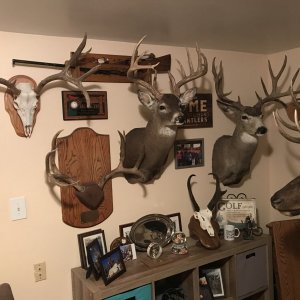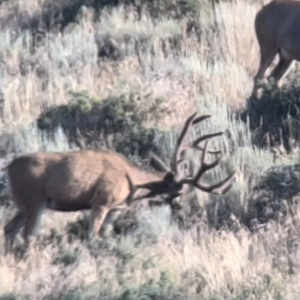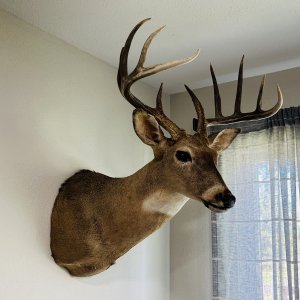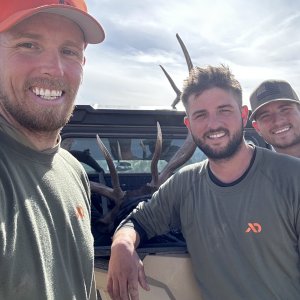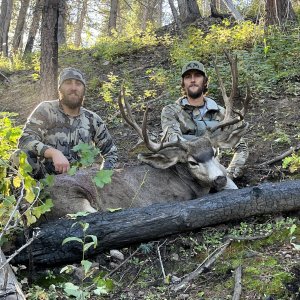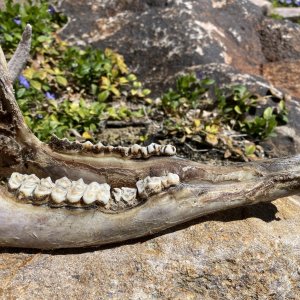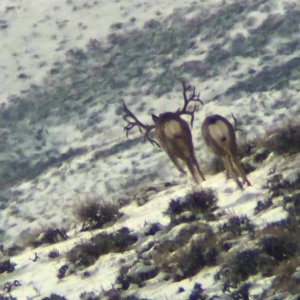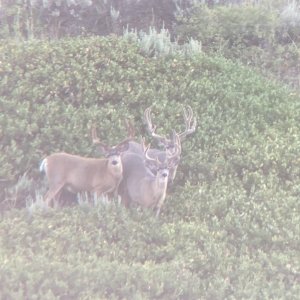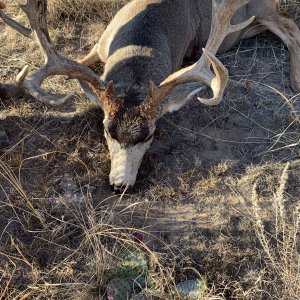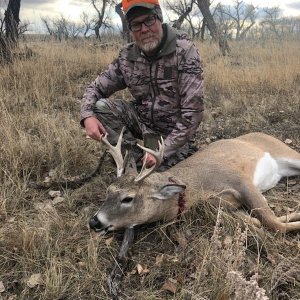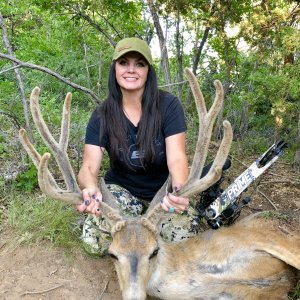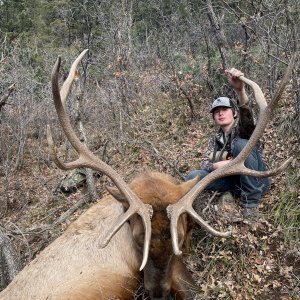spot, but don't stock,
this time of the year there in the nursury range,
the bulls are off in there own habitat,
first look for well used bedding areas.
on leadges, with heavy dark timber. facing north, deep shade, and a good pine needle floor,
and good fresh droppings,
now check of trails, either going up or down, they typ, will lead you to water and usaly with in a couple hundred yards or so, and usaly in site of there bedding areas,
then where is the food.typicaly with in a mile or so of the bedding areas, it also will hold water close to it.
if i was to give my best guess on when to scout,
it would be the tail end of summer,don't go running all over the mountian.
find a high spot and glass, very early in the morning, and late in the evenings. just sit down and wait.
don't go rambling thru there bedding areas during the day,
you may just jump them out of their beds and they will change there location.
scout again a week or two prior to hunting,
this last one depends on weather or not there has been a hunting season open before you get out there.
if there has been presure they could be just about any where,
but typ. they head to the deepest darkest most extreme terrain,
and only come out at night.
or into privet ground where there isn't any presure.
if you can find that link to there rought, you"ll be bringing home back straps.
best bet is to get a hold of some good maps, terraserver has some great shots from satalight that can show you the dark holes that may be the key to your scouting.
they can be saved down as bit maps and plotted.
water is the key to success, you find there drinking holes,
there is a good chance in finding elk,
but they may change locations if pressured,
also look for good parks with lots of good grass, its like holding a candy bar out in front of you wife or girlfriend,
morning hunts, put your self in the rought back to there beding areas, and evening hunts in there water holes, of food plots,
I personaly can't find the time to scout,
so I try to get to the field 3 or 4 days early prior to the season and sit and wait.
watch their movements, the're creatures of habbit, they will walk the same trails, stop at the same spots before crossing openings, eat from the same plot, and sleep in the same beds if not disturbed.
so do'nt go on a rampage thru their grounds. if your dead set on scouting, sit back and scout from a far.
once you find their secret. thats when your scouting begins. plan that ambush.

